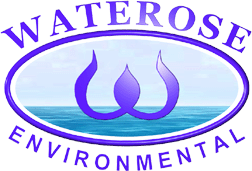 | ||||||
| Articles | Projects | Resume | Cartoons | Windsurfing | Paintings | Album |
Sustainable Development in Indonesia

by Waterose
The world convened in 1992 at the Earth Summit in Rio to develop a global plan for the sustainable development of the Earth. Sustainable development is "development that does not destroy or undermine the ecological, economic or social basis on which continued development depends" (Rogers 337). The summit produced five major multinational agreements. Two major agreements are the Rio Declaration on Environment and Development, and Agenda 21. Both of these documents include a section that encompasses the role of the indigenous peoples. Indigenous people are people born in a region and are generally descendants of the original inhabitants (Agenda 21 226). Principle 22 of the Rio Declaration states that "Indigenous peoples and their communities and other local communities have a vital role in environmental management and development because of their knowledge and traditional practices. States should recognise and duly support their identity, culture and interests and enable their effective participation in the achievement of sustainable development" (Rogers 196). Agenda 21 is "a blueprint for action for global sustainable development into the 21st century" (Agenda 21 13). Chapter twenty-six of Agenda 21 outlines the major issues and concerns of indigenous peoples (Agenda 21 227-229).
The four primary issues of the indigenous peoples include:
that their intellectual property rights to biotechnology sourced in their territory be protected (Rogers 120), that their sovereign rights over their culture be preserved (Rogers 128), that their territory and environment be protected from exploitation and pollution (Rogers 128), and that education and research programs for sustainable development be strengthened (Agenda 21 228).
Can sustainable development be achieved in a developing nation comprised of indigenous peoples? The answer to this question is yes. A model example of a developing nation of indigenous people is Indonesia where the primary goal is to achieve sustainable development. Indonesia is a resource rich country with issues that parallel the issues presented at Earth Summit '92 by the indigenous peoples.
The development of Indonesia and its' indigenous peoples is relatively young by Earth's standards. Indonesia is young chain of fertile volcanic islands located at the equator between 110°E longitude to 140°E longitude. Because of its location and geomorphologic formation, Indonesia is an abundant tropical area with mineral rich soils and a year long growing season. Indonesia is rich in bio-diversity of flora and fauna, hence the protection of any biotechnology sourced within Indonesia belongs to the people of Indonesia, one of the primary issues presented at Earth Summit '92.
The indigenous people of Indonesia immigrated during the Pleistocene ice age in the Quaternary period, when the sea level was very low and a bridge formed from Asia across Indonesia to Australia. Hominids migrated from Indochina to Indonesia (Ollier 8) forming the gene pool for the present indigenous people of Indonesia.
Today, Indonesia consists of more than 300 ethnic groups, the majority of which are Malay (Indonesia Source 13). Indonesia experienced centuries of political upheaval and dominance by outsiders including India, the Netherlands, the French, the British, and the Japanese (Indonesia Source 11). The Republic of Indonesia gained independence on August 17, 1950, and has been struggling against poverty to achieve economic independence and stability in its place as a newly developing nation in global affairs. Protection of sovereign rights over their culture is a primary concern of the people of Indonesia, one of the primary issues presented at Earth Summit '92.
The primary objective of Indonesia was to become self sustaining to feed its growing population. During the 1950's and 1960's, the buzz words "sustainable development" were not yet prominent in global discussions and Indonesia developed its resources at an unprecedented growth rate. During this period, the evolution of sustainable development is best illustrated by comparing and contrasting two specific regions within Indonesia, the islands of Java and Bali.
The summary differences between Java and Bali are that Java is primarily a region of intensified agriculture and sophisticated technology whereas Bali is a region of traditional horticulture based on simpler cultural technology and practises sustainable agriculture. The five main issues of sustainable development include population growth, agriculture, water management, pest control and education.
Present day Indonesia has a population that exceeds 200 million people (National Geographic 15, Map Insert), over a total land area of 1.9 million km2 (Indonesia Source 12) with a potential population density of approximately 100 people per km2. However, the majority of the population is located on Java and Bali. Java has a population that exceeds 120 million people (National Geographic Map) over a land area of 130,000 km2 (Indonesia Source 12), thus with a population density of almost 1000 people per km2. In comparison, Bali has a population that exceeds 2.8 million people (Indonesia Source 12) over a land area of 5,633 km2 (Indonesia Source 12), thus with a population density of almost 500 people per km2, half as much as Java. While the common objective of Java and Bali is to be self-sufficient concerning food production and economic stability, both areas have evolved towards sustainable development in very different ways.
Since gaining independence in 1950, Indonesia has received food aid, financial aid, and intellectual aid from the United Nations (Frederick 159). Each decade featured anthropological studies and plans for economic development. Indonesia changed from being the worlds largest rice importer in 1975 (Indonesia Source 113) to being self-sufficient in rice production in 1985 (Indonesia Source 114).
Agricultural development in Bali temporarily adopted advanced technology during the 1970's and 1980's, but reverted to the traditional agricultural techniques due to the visible impact on their ecosystem. Agricultural planting, watering and harvesting schedules are controlled by the subak, which is a community based co-operative organisation that is under the authority of the religious doctrines (Barth 63-75). During the 1970's farmers planted according to their schedules to increase rice production which resulted in an ecological crisis due to infestation by pests which would otherwise be eradicated by flooding and burning of the grasses between cycles (Bates 275, 374). Furthermore, "the government periodically attempted to take control of the irrigation system, with mixed results, leading to a movement in the early 1990's to return the authority for the agricultural schedule to the traditional and highly successful interlocking subak arrangement" (Frederick 108). Rice production in Bali remains non-mechanised and under the control of the subak. Bali did expand crop production on a subsistence level to include coffee and some fruits and spices for domestic use. The most significant aspect of agriculture in Bali is the lack of mention of environmental degradation in ethnology's published by anthropologists from the 1950's through the 1990's, who have studied culture in Bali. There are no accounts of soil erosion, degradation, salinization, water pollution, depletion of the aquifer, or salt water encroachment written about agriculture on Bali.
Conversely there are extensive accounts written about environmental degradation concerning agriculture on Java. Agricultural development in Java expanded to produce plantation style cash crops including sugar, rubber and coffee (Frederick 171). The government modernised land ownership in the 1980's restricting the size of land ownership depending on the population density (Frederick 172). Intensified agricultural methods included Green Revolution rice technology, high yield rice seed varieties (Frederick 167), expanded irrigation, double crop planting (Frederick 173), and extensive use of fertilisers and pesticides (Frederick 174). In response to increased productivity, increased population growth and decreased availability of land Java introduced the transmigration program in the late 1980's.
The transmigration program relocates landless families from densely populated areas of Java to the outer islands of Indonesia (Frederick 173) that practise primarily swidden agriculture (Frederick 78). The program utilises advanced technology including arial photography, topographical mapping, and soil sampling to ascertain agricultural viability (Indonesia Source 58). The next phase is to conduct a study to ensure that relocation will not disrupt any established indigenous communities (Indonesia Source 58). The third phase requires a team of engineers to design the village infrastructure (Indonesia Source 58). The final phase is to relocate the families to the new village with seed crops, building materials, tools, and cash grants (Indonesia Source 58). "Each family receives about one hectare of rain-fed cropland" (Frederick 173). The village is expected to be self-sufficient within five years. The transmigration program is expected to successfully relocate approximately two million families by 1994 (Indonesia Source 58).
While the transmigration program provides a careful detailed plan of action for solutions to the overpopulated area, development in Java has been at a high cost to the environment. Extensive expansion of irrigation systems and double cropping have overtapped the natural aquifer causing the seawater to infiltrate further inland (Indonesia Source 125). Industrialisation and urbanisation on the coastal estuaries have raised pollution levels to unsanitary levels (Frederick 134) and polluted fish and shrimp ponds (Frederick 79). Indonesia is in the process of building ten waste water treatment plants, and five of these plants will be located on the island of Java (Indonesia Source 124). It is important to note that none of these water treatment plants are required to be built on Bali, the second most densely populated region of Indonesia, because of Bali's sustainable development and management of it's water resources.
In addition to water pollution issues, Java has also experienced serious soil degradation in the form of erosion and nutrient depletion (Frederick 80). "If more farmers in Java practised the intensive and sustainable agriculture that has been standard in Bali, ... much of Java's devastated land could be rejuvenated into a garden isle like Bali" (Meyers 59).
Bali is a model example of sustainable development. The government of Indonesia, pursuant to the Earth Summit '92, announced the creation of two new ministries in 1993, the State Ministry of the Environment and the Environmental Control Agency whose broad mandate is sustainable development and environmental rehabilitation (Indonesia Source 123). A key component of the sustainable development program is a network of environmental study centres at 27 universities across Indonesia (Indonesia Source 125) and the construction of the Environment Management Centre on Java (Indonesia Source 126).
Sustainable development is the primary goal of the government of Indonesia. Bali achieved sustainable development because, due to it's small size, Bali quickly recognised the damage that intensified agriculture was causing to it's fragile ecosystem when development exceeded carrying capacity resulting in ecological crisis. In contrast, Java did not recognise the environmental degradation that was being caused by intensified agriculture because the larger land area facilitated continued growth until Java reached it's present state of ecological degradation.
Fortunately, the government of Indonesia is working fervently to regain ecological balance and develop an "Environmental Master Plan" (Indonesia Source 125). Indonesia can learn from it's own mistakes in Java, from our mistakes in the western industrialised nations and most importantly from hope generated at the global conference, Earth Summit '92. One has to only look at the small garden isle of Bali to realised that sustainable development is possible, both for Bali and the small isle of Earth floating in the heavens of our universe.
Works Cited
Barth, Fredrik. Balinese Worlds. Chicago: University Press, 1993.
Bates, Daniel G. Cultural Anthropology. New York: McGraw Hill, 1996.
Earth Summit Agenda 21: The United Nations Programme of Action from Rio. United Nations Publication. New York, 1993.
Frederick, William H. Indonesia: a Country Study. 5th ed. Maryland: Bernan, 1994
Indonesia Source Book 1993. National Development Information Office. Republic of Indonesia: 1993.
Meyers, Dr. Norman., et al. Gaia: An Atlas of Planet Management.
London: Doubleday, 1984.
"Irian Jaya: Indonesia's Wild Side." National Geographic. Vol.189.2. Feb. 1996: 8-43.
Ollier, C.D. "The Geological Setting." Indonesia: The Making of
a Culture. Ed. J.J. Fox. Australian National University.
Canberra: Socpac, 1980.
Rogers, Adam. The Earth Summit: A Planetary Reckoning.
Los Angeles: Global View, 1993.

 email Waterose
email Waterose
Please Sign My Guestbook
View My Guestbook

| Articles | Projects | Resume | Cartoons | Windsurfing | Paintings | Album |
 | ||||||